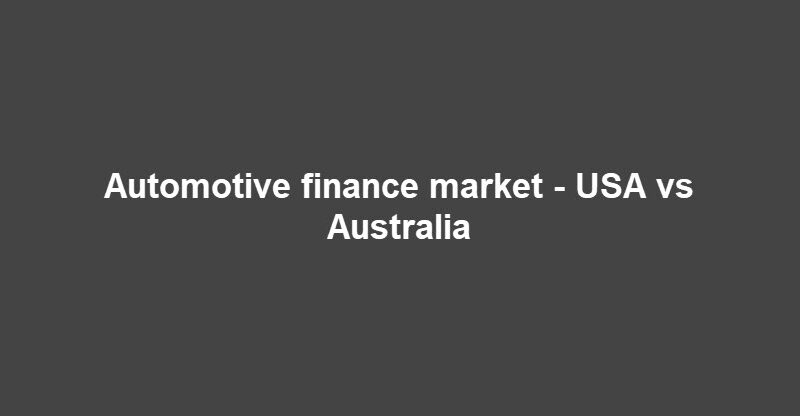Automotive finance market – USA vs Australia
With the automotive finance market set for growth between 2023 and 2031, here is a comparison of two wealthy, Western nations’ automotive finance market – especially in view of North America dominating the automotive finance market globally. Cars as a form of transporting people and goods are here to stay. Despite a charge of governments and environmentalists insisting upon a transition to electric, moving ourselves on four wheels will be the primary method of getting from A to B.
As cars are classed as major assets, the overwhelming majority of people in developed nations like the United States and Australia will need to take out some kind of finance either to own or lease a car.
Automotive finance market in the United States
According to the Federal Highway Administration, 93% of households in the United States had access to at least one vehicle during 2019.
Mordor Intelligence says that “Auto financing penetration in passenger vehicles increased from 75% at the beginning of 2020 to around 80% in 2021” due to aggressive advertising tactics and an increase in financing options. As of 2021, the average 60-month car loan interest rate was 4.19%. The auto loan market is estimated to be worth USD $1.502 trillion in 2024, with a compound annual growth rate of 6% forecasted to 2029.
This may be attributed to rising interest rates and inflation. The price of new vehicles is observing a year-on-year increase of around 4.5%, with the average price of used vehicles rising more than 30% from pre-pandemic levels.
A recent study by Cox Automotive showed that vehicle leasing comprised 31.9% of all new car transactions in 2016, with one-third of millennials choosing to lease instead of buy outright.
Automotive finance in Australia
As discussed, most people finance their car as they’re unable to buy it outright (with cash, for example.) 90% of all car sales are arranged through finance or loans. 39% are financed through a dealership and around 61% are financed from other sources such as banks, lenders, or auto finance companies. In the December quarter 2017, car loan payments were the largest vehicle-related expense for Australian households.
Australian Bureau of Statistics (ABS) data showed the monthly value of new fixed-term loan commitments taken out to purchase a road vehicle totalled over $15.6 billion across 2023. In 2017, car finance commitments accounted for 2% of total GDP. The Australian Automobile Association says that an Australian living in a capital city spends about AUD $9,892 on their car loan, on average.
According to Mordor Intelligence, the Australian automotive financing market was valued at USD $50.60 billion in 2021 and expected to surpass a net valuation of USD $73.60 billion the end of 2027, which represents an average growth of 6.30% over that period. A little over a quarter of the market is made up of commercial finance commitments with the rest being private/passenger loans.
According to Equifax, 3.5% of all car loans are behind on payments or in arrears, as of Q4 2023. 0.9% of loans were 90 days past due.

